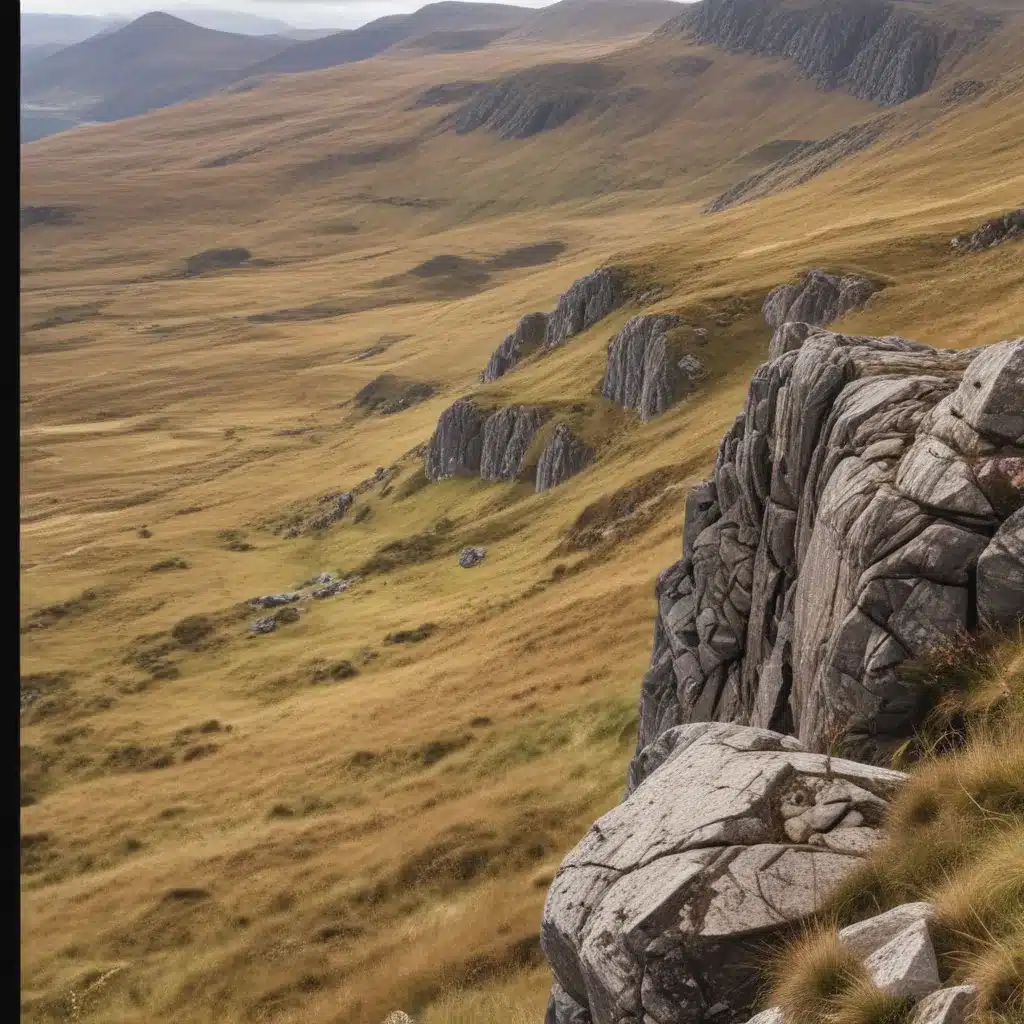
The Cradle of Geology
As I step out of the van, the sheer vastness of the Scottish Highlands overwhelms me. Towering peaks, pristine lochs, and a rugged coastline – this is a landscape that feels untouched by time. But looks can be deceiving. Beneath the surface, the ground tells a captivating story, one that stretches back billions of years.
Welcome to the North West Highlands Geopark, a UNESCO-recognized geological wonder that has earned the title of the “Cradle of Geology.” Here, the rocks and landforms reveal the Earth’s ancient history, from the oldest rocks in Europe to the first identified thrust fault. It’s a place that has challenged and confounded geologists for centuries, and I’m about to delve into its secrets.
Unraveling the Geological Tapestry
As I join my fellow enthusiasts for the Geopark’s renowned Geotour, I can’t help but feel a sense of excitement. Our guide, Pete Harrison, is a walking encyclopedia of geological knowledge, and he’s eager to share his insights.
We start our journey at Achmelvich Beach, where the colorful outcrops of Lewisian gneiss, some of the oldest rocks on the planet, stand as silent sentinels. Pete explains how these ancient igneous rocks were transformed by intense heat and pressure over billions of years, their banded appearance a testament to the dynamic forces that have shaped this land.
“Gneiss is complicated,” Pete chuckles, “formed originally as igneous rocks in the Earth’s crust, then baked, squashed, and melted, perhaps many times over unfathomable eons.” As we examine the dark Scourie dykes that cut through the gneiss, I begin to grasp the sheer scale of time we’re dealing with here.
Unconformities and Unexpected Discoveries
Our next stop, Clachtoll, reveals an even more intriguing geological story. Here, the metamorphic Lewisian gneiss meets the sedimentary Torridonian sandstone, an unconformity that speaks volumes about the region’s tumultuous past.
“See how the sandstone sits atop the gneiss?” Pete points out. “That means a vast expanse of time is missing, eroded away by the forces of nature.” I try to wrap my head around the implications – millions, even billions of years, simply vanished into the mists of time.
As we scour the beach, Pete draws our attention to the fossilized cyanobacteria mats called stromatolites, some of the earliest signs of life on Earth. “Imagine, these microscopic creatures were swimming in ancient seas when our planet was still young,” he marvels.
And the surprises don’t end there. Near the village of Stoer, we find evidence of a recently discovered meteorite impact, the rock bearing the telltale signs of “shock metamorphism” that geologists have come to associate with such dramatic events. I can’t help but feel a sense of awe at the sheer scale of the forces that have shaped this landscape.
Unraveling the Secrets of the Moine Thrust
No visit to the North West Highlands Geopark would be complete without a stop at Knockan Crag, the site of a groundbreaking geological discovery. As we hike up the trail, Pete regales us with the story of the 19th-century geologists who stumbled upon a geological puzzle that would reshape our understanding of the Earth’s history.
“Here, you can see older rock on top of younger rock,” Pete explains, “which was completely contrary to the accepted principles of geology at the time.” The solution, as two intrepid geologists, Ben Peach and John Horne, would eventually demonstrate, was a “thrust fault” – a vast, tectonic movement that had pushed ancient rock over newer formations, creating a stunning visual anomaly.
“This was the first thrust fault ever discovered in the world,” Pete adds, “and it’s now known as the Moine Thrust.” As I place my hand on the very spot where the old rock meets the new, I can’t help but feel a sense of connection with the pioneering scientists who unraveled this geological mystery.
Decoding the Landscape
Throughout our week-long journey, I’ve come to see the Scottish Highlands in a whole new light. What once appeared to be a wild, untamed landscape now reveals itself as a tapestry of geological stories, each thread woven together by the relentless forces of time.
From the ancient gneisses of Achmelvich to the thrust faults of Knockan Crag, every rock, every outcrop, and every landform holds a clue to the Highlands’ past. And with the guidance of the Geopark’s knowledgeable staff, I’ve learned to read this landscape like an open book, discovering the secrets hidden in plain sight.
As I bid farewell to the North West Highlands, I know that I’ll never look at the Scottish countryside the same way again. This is a place that has captured the imagination of geologists for centuries, and thanks to the Geopark’s dedication to education and conservation, it will continue to inspire awe and wonder in all who come to explore its geological treasures.
So, if you find yourself drawn to the rugged beauty of the Highlands, be sure to visit Loch Ness Shores – and don’t forget to bring your geological curiosity. Who knows what secrets the land might reveal?

